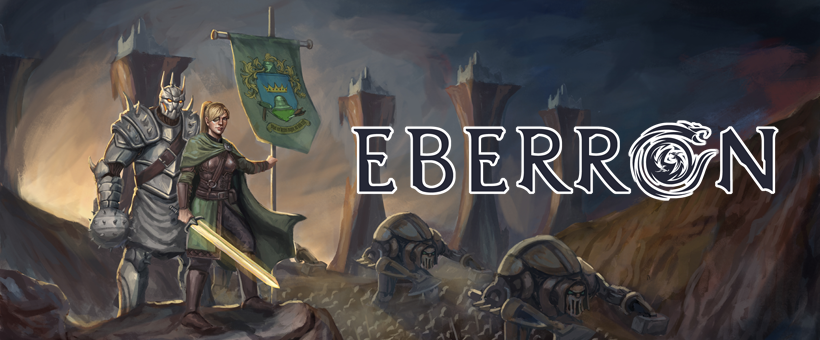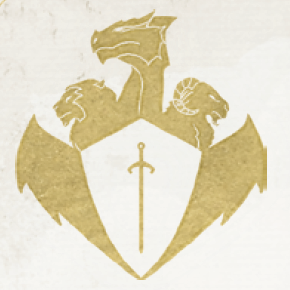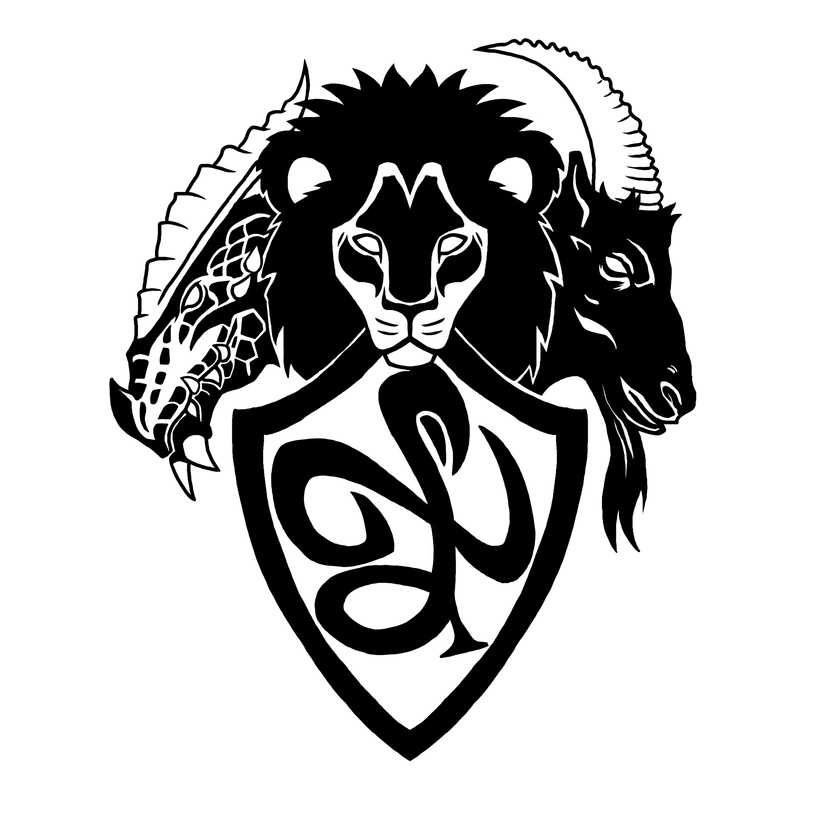
Those two have been watching you since you came in. The dwarf in the conveniently nondescript chainmail recently drank a Potion of Giant Strength—see the way his muscles are trembling, barely able to contain the power? The Khoravar’s a mage. That’s a wand of Xorian wenge in his hand, so she’s probably an enchanter. Which probably means they intend to take you alive… probably. Do you want to try your luck and see how it turns out? Or shall we discuss my rates for protection?
The Mark of Sentinel sharpens your senses. It provides an intuitive bonus to Perception and Insight. But this isn’t just about keen sight and sharp ears. It’s an intuitive bonus—an instinctive evaluation of all possible threats. The Dragonmark keeps you alert, every ready. When you enter a room, you always check the exits. When you meet a stranger, you’re always searching for signs of hidden weapons or hints as to their combat capabilities. It’s not a conscious thing; it’s been drilled into you and enhanced by your Mark. House Deneith has never abandoned its martial roots. If you were raised in the House, your education was on par with any military academy in the Five Nations. And once you survived your Test of Siberys—whether you manifested a Mark or not—you had to serve a tour in the Blademarks or the Defender’s Guild. Whatever path you’re following now, you were raised in a culture of martial discipline and service.
When creating a Deneith adventurer or NPC, consider how this upbringing has affected them. The majority of Deneith heirs serve as Blademarks or Defenders for their entire careers; that service is all they know and all they need. What about the Deneith you’re making? Do they still serve the house or have they turned their back on it? Or is it something in between—they’re a mercenary licensed by the Blademarks, but they’ve chosen to follow an independent path? Regardless of the answer, consider this. A Deneith heir was raised with a strict code of discipline and bound to a chain of command. Do they maintain that discipline as an adventurer, and possibly seek to impose it on others? Do they want the party of adventurers to function like a military unit? Or have they rejected their upbringing, choosing to celebrate their independence and freedom? Is war second nature to them, or are they trying to bury their blade?
While it varies by family, Deneith heirs tend to be stoic and serious. Heirs of the house were raised to be soldiers, and furthermore, trained to be ever alert for danger. It’s nearly impossible for a Deneith heir to fully relax and let their guard down; it simply isn’t in their nature. Likewise, Deneith heirs are driven by their desire to protect the people and things they care about. In making a Deneith character, consider who or what you’re protecting. Is it your entire adventuring party? Is it a particular individual? Or is a concept—a nation, a faith, a village? This is one of the main reasons heirs end up leaving House Deneith, whether voluntarily or as excoriates. As a Blademark or a Defender, you serve the client only as long as gold continues to change hands. You could be defending a noble one day, and serving their mortal enemy the next day. The House does its best to push heirs to see themselves as, ultimately, defending DENEITH—protecting the family and ensuring its prosperity through their hard work. But there are always Sentinels who develop an attachment to their clients or to ideals beyond pure profit. As a Deneith character, are you driven by gold and the good of your House? Or have found something that’s more important to you than platinum?
Deneith upbringing is much like a military academy, but that doesn’t mean that Deneith adventurers have to be fighters. Heirs initially train with spear, club, dagger, and crossbow, and those that excel at physical combat focus on martial training. But magic is part of everyday life in Eberron, and heirs who have the potential to become Wizards, Sorcerers, or Bards receive specialized training to develop those skills. Blademark mages are trained to focus on Evocation, Conjuration, and other spells that can play a powerful role on the battlefield; those destined for the Defender’s Guild will focus more on Spells of the Mark and personal defense. Meanwhile, a Deneith Bard is primarily trained to lead. They’re warlords, not entertainers; their Inspiration reflects this leadership, and they are driven toward the College of Valor. These paths—martial and magic—are the common choices; heirs without the exceptional potential of player characters will still be tapped as player characters. Other classes could reflect unusual training or focus. The Peacekeepers are an elite force within the Defender’s Guild, trained to protect clients in environments where no weapons are allowed; they are an order of Monks with the Warrior of Mercy subclass. While there’s no schooling for it, Deneith has produced a number of champions whose mastery of the Mark of Sentinel allows them to reduce the damage from attacks; this is a different way of playing a World Tree Barbarian, presenting their Rage and other class features as being manifestations of the Dragonmark. Other classes are less common in House Deneith. A Rogue or Warlock with the Mark of Sentinel likely developed their skills outside of the House; Deneith doesn’t typically traffic with spirits, and while the Peacekeepers are subtle, the Blademark and Defender’s Guild primarily focus on strength rather than stealth. Deneith heirs with a religious calling typically follow this beyond the House. An heir who becomes a Paladin may return to Deneith once they have mastered their gifts, and such champions often become Sentinel Marshals; but the house itself doesn’t have the depth of faith required to train Clerics of Paladins, let alone Druids.
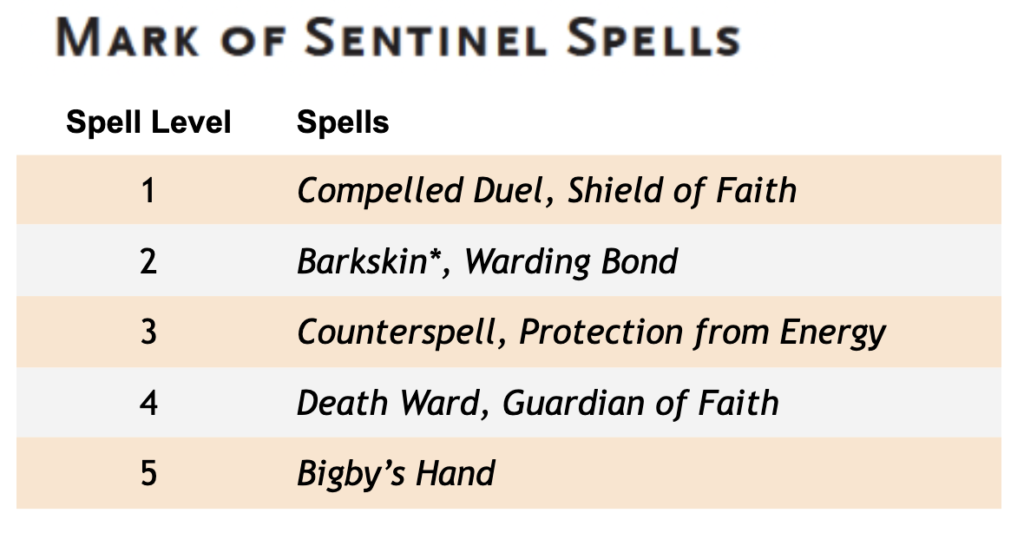
THE MARK OF SENTINEL
The Mark of Sentinel allows its bearer to protect themself and the people around them. Many of its gifts are straightforward, whether deflecting an attack with a wave of force (Shield) or providing slightly weaker protection over a longer period (Shield of Faith, although no faith is required). Heirs who possess the Lesser Dragonmark can disrupt other forms of energy, as seen with Counterspell and Protection from Energy. Heirs with the Greater Mark have the ability to cast Bigby’s Hand; this draws on the same force manifested with Shield, amplified and wielded with more finesse. Guardian of Faith draws on this same power, manifesting a being formed from this shield energy. Typically, a Deneith Guardian of Faith draws on the appearance of the heir’s family beast—a Ram, Lion, or Dragon. However, there have been heirs of the House whose Guardians have taken other forms; Matriarch Dalia d’Deneith was celebrated for manifesting a full Chimera with her Dragonmark.
Most of the spells of the Mark of Sentinel revolve around the projection or disruption of energy, but there’s a second thread that’s more subtle: Compelled Duel and Warding Bond. While adventurers with the Mark of Sentinel have access to all of its powers, NPCs are often more limited. Deneith NPCs from the Ravan line tend to develop Compelled Duel and Warding Bond, while those of the Wyrn families are more likely to be able to cast Shield of Faith and Barkskin. The children of the Lion—the core Deneith—are equally likely to manifest either or both sets of spells.
Kanon vs Canon. One spell on the list above is marked with an asterisk, and that’s because it’s a change from the list that appears in Forge of the Artificer. By canon rules, the Spells of the Mark for the Mark of Sentinel include Zone of Truth… and I don’t like it. Zone of Truth is a great spell for a Sentinel Marshal, and could be a useful one for a bodyguard. But thematically, it feels quite different from the other spells; it’s about investigation rather than defense. Which ties to the fact that we’ve previously said that it’s House Medani that licenses Truthtellers—Magewrights that can cast Zone of Truth. If Zone of Truth was a core ability of House Deneith, I’d expect Deneith to be licensing Truthtellers. So, in my campaign I replace Zone of Truth with Barkskin. This allows the heir to give a willing individual an Armor Class of 17 for up to an hour, with no concentration required. Thematically, I see it as an extension of Shield and Shield of Faith, describing it not as “giving the target’s skin a bark-like texture” but rather as surrounding them with a faint but noticeable shimmer of energy. This flares up when it deflects a blow, manifesting as a web of blue-purple threads. This is something people have been working with for centuries, commonly used by Defenders to protect charges who either can’t wear armor or aren’t proficient in it. So while the shimmering is subtle, it’s an effect observers will notice and recognize.
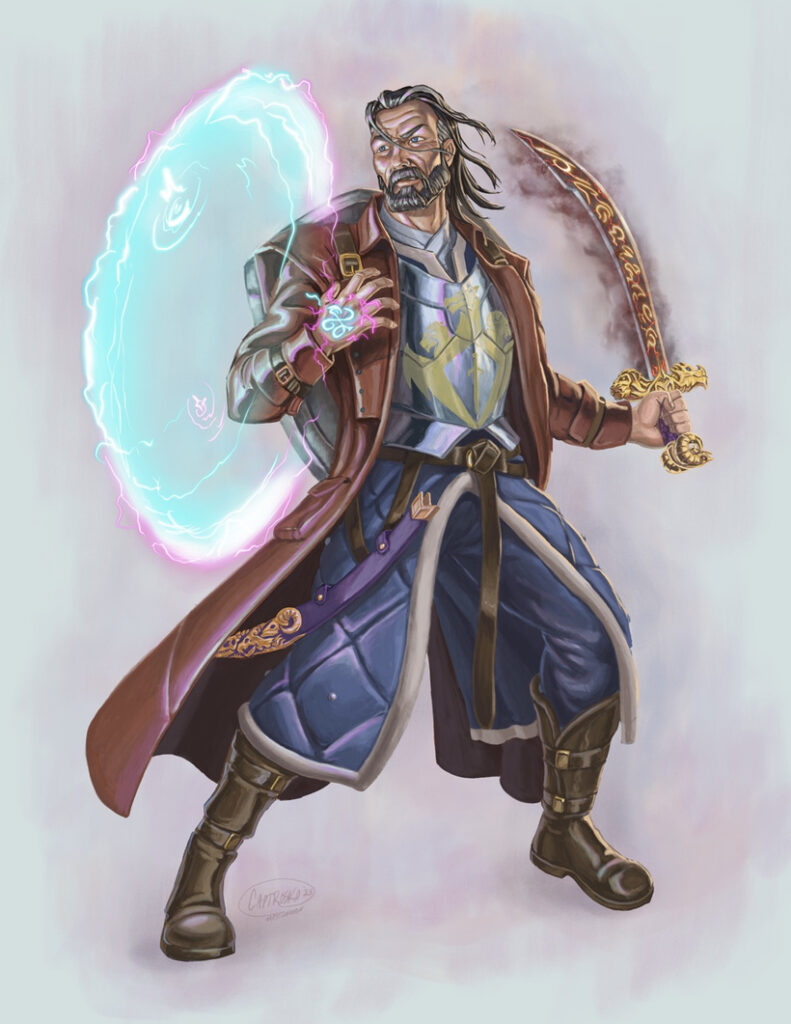
THE HISTORY OF HOUSE DENEITH
Some say war is bound to the roots of Karrnath. The area is infamous for its Mabaran manifest zones, but perhaps Shavarath and Daanvi have a subtler, broader influence. Maybe there are shards of Rak Tulkhesh’s prison buried beneath the great cities of Karrnath, whispering of violence. Or maybe it’s just that the land is cold and harsh, and that the people there must be strong to survive. That, too, is part of the mystery of Karrnath. It’s a grim land, harder on its people than the green fields of Aundair… and yet those born in Karrnath often feel a fierce love for their bleak homeland, finding the more hospitable lands of the Five Nations to be uncomfortably soft and warm.
The Mark of Sentinel was the first Dragonmark to manifest on humans. At that time, what is now Karrnath largely followed the model still seen in the Lhaazar Principalities of the mainland—a scattering of domains carved out by those with the strength to hold them. When the Mark of Sentinel first appeared on Jarla Deneith, she kept it hidden while she mastered its powers. When three of her children developed the Mark, Jarla and her kin used its power to challenge the tyrant Dynass. Though Jarla was slain in the battles that followed, the Deneith triumphed. Jarla’s eldest son, Karrlak, laid the foundations of Sentinel Tower in the city that still bears his name. At that time, almost every heir of Deneith developed the Sentinel Mark, and the legend of these mystical warriors spread across the land. It was a century later when new stories arose of Sentinel-marked champions in other realms—the Wyrns of Korth, and the Ravans of Vedakyr, which was then called Ravanloft. The Ravans were crueler than the Deneith, and ruled through force and fear. The Wyrns were loyal servants of the lords of Korth when the Mark appeared among them, and they remained loyal to their oaths, using the Mark of Sentinel to defend their liege lords rather than turning against them. From the beginning there was bad blood between Deneith and Ravan, and the next century was marked by an escalating series of duels and raids which weakened both families and their cities. The Deneith were valiant warriors, but civic administration proved to be their weakness, especially when plague and famine wracked Karrlakton. This led to the rise of a new leader, whose charisma and strategic brilliance helped him rally the common people of Karrlakton behind him: Karrn. While some tales say Karrn defeated Orrin Deneith in battle, the official account of the house says that Karrn invoked the lords of Korth and their Sentinel Guard and urged Deneith to follow their example. Karrn swore that if Orrin and his family would stand by his side and defend him, they would share in his glory. According to the Annals of Deneith, Orrin believed that Karrn was guided by the Sovereigns of War, and said that the gift his family was given was meant to be a shield, not a crown. In the decade that followed, Karrn’s fortunes soared, and the Deneith prospered at his side. One by one, the great cities fell to Karrn’s blade or submitted to his rule. The lords of Korth chose to join Karrn, and the Wyrn came with them. The Ravan resisted; they were driven from Ravanloft, and Karrn claimed the castle built by the Sentinel family as his personal sanctuary. The Ravans opposed Karrn throughout his campaign, and had things gone another way, they might have fled into the Lhazaar Principalities and remained independent to this day. But during the Battle of the Bastion, Orrin Deneith called out the matriarch Syele Ravan. Orrin said that those who carried the Warrior’s Mark should stand together, and Leodan Wyrn stood with him on this. If Syele defeated Orrin, both Wyrn and Deneith would join with Ravan and oppose Karrn. But if Syele fell to Orrin, the Ravan would join their fellow Sentinels. The Annals say that Orrin compelled Syele to accept the duel through the power of the Mark they both carried, and that magic flowed through all those who bore it, binding them to this bargain. Had Syele won that fateful duel, House Ravan might be a power in the world today. But Orrin emerged victorious, and that was the beginning of House Deneith.
The Sentinel Families stood alongside Karrn as he forged the kingdom of Karrnath and stretched his hand beyond. They fought alongside him as he crossed the river and claimed the lands to the south. And when Karrn went too far—when his army was broken and his forces scattered—it was his Sentinel Guard who saw him safely back to his castle in Ravanloft. Orrin Deneith died in the battle of Daskaran, flinging himself in the path of a ballista bolt that would have slain Karrn. While his death was a blow to his family, the story of Deneith’s commitment and courage spread wide… and when the war was finally over, Queen Lycia of Daskaran sent messengers to Karrnath, seeking a force of Sentinel Guards of her own. It was at this moment that Deneith embraced the path of the mercenary—not bound to a single king, but promising loyal service to any who would pay their price.
Karrnath persisted even after the death of Karrn the Conqueror. Karrlakton remained the stronghold of Deneith, and over time the house expanded its mercenary operations. Karrlakton became the proving ground for a force of soldiers ready to serve under any banner. Over time they spread out across Khorvaire, propping up nobles and warlords and establishing new garrisons in those cities they protected. When the War of the Mark unfolded, it was Deneith that organized and commanded the combined forces of the Dragonmarked Houses… And Halas Tarkanan, who organized the Aberrant resistance, was the son of a Deneith heir trained in the tactics of the House. When the Twelve was established in the wake of the War of the Mark, Deneith was a proud member. In the time that followed, Deneith’s ranks grew. Merchants (and House Orien) employed Deneith mercenaries to guard their caravans. City-states relied on Deneith soldiers to serve as peacekeepers. Some scurrilous accounts suggest that members of the Ravan line engaged in acts of banditry in order to drive up the demand for Deneith’s services, but these accusations were never substantiated.
While Deneith served clients all over the continent, its heart lay in Karrnath. The lords of Karrnath leaned heavily on the House, and more than once Deneith helped “adjudicate” a conflict between heirs. While the House maintained its general principle that the Mark of Sentinel was a shield, not a crown, there’s no denying the fact that they helped the Wynarn family achieve and hold power—and the Wynarns were unmarked cousins of the Wyrn. The ties between House and Crown remained close, and it was common for a Wynarn prince to reside in Karrlakton and to drill with the Deneith. This was the case with the young Prince Galifar. When that prince became a conquering king, the offer he made to the Twelve — the terms of the Korth Edicts — were modeled on the role House Deneith had played throughout the history of Karrnath. Deneith’s endorsement of Galifar played a vital role in pressuring the other Houses to accept the arrangement, and it’s no coincidence that Deneith alone retained the right to maintain significant military forces under the Korth Edicts. Nonetheless, the golden age of Galifar proved to be a challenging time for House Deneith. With the nations united, the people of Sigilstar no longer feared Aruldusk raiders, and the lords of Athandra and Danthaven resolved their disputes through the courts rather than on the battlefield. There was still some need for the Blademarks—defending merchants, battling brigands, suppressing unrest, fighting monsters. But it was clear House Deneith needed to explore new paths, and this led to the foundation of the Defender’s Guild and the Sentinel Marshals. The Blademarks had always served as bodyguards to powerful lords, but now the role of guardian was more important than that of soldier. And the Sentinel Marshals quickly became a trusted force that could be called upon to pursue fugitives from justice and to enforce the King’s laws from one end of Galifar to the other.
One might expect that the Last War would find House Deneith heavily invested in the Defender’s Guild, ill-prepared to take to the battlefield. Little could be further from the truth. In the final years of his reign, King Jarot became obsessed with the defense of Galifar. In addition to building up the Royal Army, Jarot commissioned increasingly powerful weapons of war from House Cannith and called on House Deneith to provide elite units and to prepare reserves. Patriarch Halden Harn d’Deneith could smell blood on the air, and he worked quickly to revitalize the Blademark and to draw together the scattered mercenary bands licensed by the House. It’s worth noting that the Sentinel Marshals largely opposed the Last War, and the Lord Commander Brashin Halar d’Deneith met with each of the rival Wynarn heirs, urging them to honor tradition and to preserve the united kingdom. Some say that Brashin’s assassination, six months after the death of King Jarot, was the true death knell of Galifar.
Once the war broke out in earnest, demand exploded. In most nations, nobles were expected to provide military forces to their ruler. This could be accomplished through conscription, but a lord could avoid this by paying for a unit of Blademarks to take the place of their subjects. Karrnath and Thrane were both culturally well prepared for war and had little need of such forces, but Cyre leaned heavily on House Deneith. Breland adapted over time, but also relied on Deneith in the early years of the war. Coincidentally, this meant that Deneith soldiers were often fighting their distant cousins in Karrnath. Despite this, the Karrnathi rulers respected Deneith’s neutrality, allowing the house to maintain its power in Karrlakton even as Deneith soldiers laid siege to Loran Rath. With that said, there’s a common myth that Blademark soldiers wouldn’t fight other Blademarks. Such a restriction would complicate warfare and seriously diminish the value of Deneith forces. However, there are two motes of truth to this tale. When blooded Deneith heirs faced one another in battle, they would surrender after suffering any injury—a tradition known as the first and felling blow. In situations where heirs expected to face other heirs, they would often carry a baton in addition to their primary weapon, using the club when fighting other heirs. The point being that they would fight, and to the best of their ability, but they would try not to kill their kin. It was also well known that Deneith would pay a ransom for its heirs, so even enemy soldiers would often try to take blood heirs alive. However, when heirs of Deneith fought against licensed mercenaries with no blood ties to their house, no holds would be barred. It was for this reason that Deneith was always seeking to increase the ranks of the Blademarks. When Deneith scouts discovered the strength of the hobgoblin bands in Southern Cyre and the Seawall Mountains, they were all too eager to recruit forces from the clans of the Ghaal’dar. The Ghaal’dar weren’t enacting some carefully planned scheme, and had Deneith shown more restraint or spread the Ghaal’dar forces more widely across Khorvaire, they might have averted the disaster than became Darguun. As it was, the soldier Haruuc recognized the shifting balance of power, and rallied the lords of the Ghaal’dar to support the bloody treachery that followed. In another time, the rise of Darguun might have destroyed House Deneith. But as it was, the nations employing Deneith were simply too reliant on the House to change their ways. But the shadow of that grand betrayal still looms large over the House, and it was this that allowed House Tharashk to gain support for its own mercenary endeavors.
Another point often misunderstood is the relationship between House Deneith and the elves of Valenar. House Deneith didn’t recruit the Tairnadal Elves, and it played no role in their initial arrangement in Cyre. The Eberron Campaign Setting states “When the Last War began, Cyre came under attack from all sides and quickly sought allies. While the Undying Court of Aerenal had no interest in returning to Khorvaire, the Cyrans drew the interest of the Valaes Tairn.” Queen Mishann ir’Wynarn dealt directly with the var-shan Shaeras Vadallia, against the advice of Halden d’Deneith. It was only after Vadallia’s betrayal that Deneith brokered deals with Valenar shans for the services of individual warriors and warbands. Deneith is very careful in how it assigns warbands, and their contracts with the elves hold many penalties for oathbreakers. Notably, each warclan that deals with Deneith has a representative residing in Sentinel Tower in Karrlakton—a hostage for their clan’s good behavior.
With the end of the war, Deneith once again finds itself with a surplus of soldiers. Within the house, the focus has shifted back to the Defender’s Guild. Many of the Blademark Viceroys believe the current peace won’t last, and are thus working hard to keep their best bands together. But many Blademarks have been released from service until circumstances shift.
What Happens Next?
- The Lure of Conquest. The importance of neutrality has been drilled into the house for generations. The Mark of Sentinel is a shield, not a crown. But the heirs of Deneith are only human, and there will always be those who dream of what Deneith could accomplish if it chose to act in its own interests instead of serving others. The Lord Commander of the Blademarks, Shirin Ravan d’Deneith, has such dreams. A recent convert to the Seeker faith, Shirin has been making contacts within the Order of the Emerald Claw and talking with Karrnathi warlords frustrated by Kaius III’s pursuit of peace; he may also be in contact with the Blades of Karrn in Stormreach, or Zorlan d’Cannith. Ultimately it’s up to the DM to decide if Shirin has enough support to actually move against Baron Brevan, or if his ambitions are far from being realized. A second question is whether Shirin envisions himself to be a second Karrn the Conqueror, establishing a resurgent Karrnath—or if his dream is to rally the Houses behind him in an echo of the War of the Mark, creating a realm governed by the Twelve.
- What’s Going On In Sharn? While some houses have well-established nefarious forces within their ranks—such as the Hurricane Harvest of House Lyrandar and the Feral Heart of House Vadalis—it’s important to remember that in Eberron, there’s always room for a new cult. The Hurricane Harvest and Feral Heart have history. But Cults of the Dragon Below can take root anywhere. Likewise, anyone could potentially be mind seeded by the Dreaming Dark. Because there’s no precedent in history, no one’s looking for cults in House Deneith… but it’s an excellent place to drop a cult of the Vigilant Eye (from Exploring Eberron) or a shard of Rak Tulkhesh. With that in mind, some people say there’s something strange about the Deneith enclave in Sharn; if you want to know more, check out Sharn: City of Towers.
- Hunters and Sentinels. The rift between House Tharashk and House Deneith has been simmering for a century. Sentinel Marshals have increasingly found themselves in competition with Tharashk bounty hunters, and now Tharashk is intruding on Deneith’s core business by brokering the services of Droaamites. Tharashk wields considerable influence as the primary source of refined dragonshards, and the Twelve has refused Deneith’s requests to censure the Dragonne’s Roar. This feud is a source of tension between heirs of the two Houses, and there have been bitter conflicts between individual Marshals and Hunters in the shadows. It’s up to the DM to decide how this will escalate. Will it remain limited to clashes between individuals? Could Deneith try to sabotage the reputation of the Dragonne’s Roar by manufacturing a disaster involving Droaamite mercenaries? Open conflict between mercenaries is unlikely, but anything could happen…
This article is an excerpt. The full version is three times the length of this, and includes the structure of the house, customs, details on the founding families, and focus items tied to the Mark of Sentinel. To access the full article, check out my Patreon!

 Unlock with Patreon
Unlock with Patreon